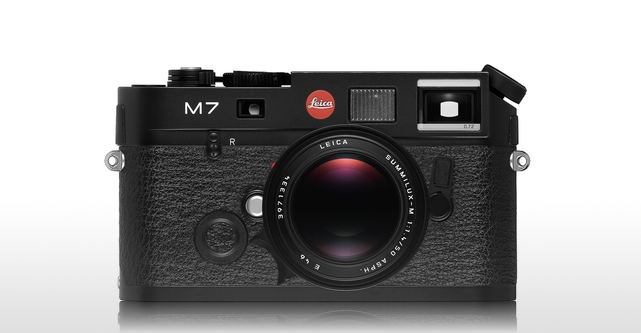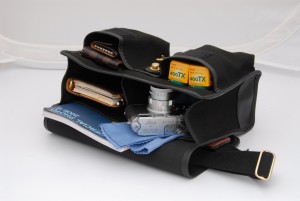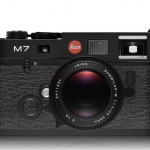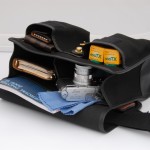Last Updated on 07/29/2011 by Chris Gampat
The Leica M7was loaned to me from Leica for review and for a project that I wanted to work on. Along with the M7, the 50mm f/1.4 Summilux was sent to me. They’re a great combo, but this was perhaps one of the rockiest reviews I’ve ever done. I also actually do not feel that the project is finished at all, but the combo gave me some great photos that absolutely will be used for it. Yes, this is a film camera.
Ergonomics
I had previously reviewed the Leica M9which I thought was great. The M7 feels very similar to the M9. The main differences are:
– The M7 has an ISO film selector in the place where the M9has an LCD screen
– The M7 has a film advance lever
– The M7 can only shoot 1fps
– The M7’s rangefinder seems smaller than the M9’s
– The M7’s viewfinder is darker than the M9’s
– The middle of the M7’s rear panel lifts up for easier loading of film.
– The M7has a rewind lever and rewind switch that needs to be switched up when you’re rewinding the film.
The camera actually seems heavier than the M9though. Holding the M9 for prolonged periods of time didn’t hurt my hand as much as holding the M7. Once I figured out a workaround to hold in comfortably and discretely, everything was alright.
The M7fit very securely into the M Classics compact bag that I had on loan to me. The image above is from the company, and as you can see it fits in very well. For clarification, that is not an M7 above.
For the first time, I’ve seen and experienced why users believe that the Leica M bodies are better for street photography. Because of the simple elegance, compactness and no real bulky parts jutting out, I was presented with less danger and problematic situations than I would have been using my Canon EOS 5D Mark II with EF 24-105mm f/4 L IS USM Lensinstead. Part of it all though is how one uses the camera.
The project I was shooting is called, “The Blind Can See the Pain.” It is part of my effort to show mainstream America that there is a lot of pain in the streets due to the recession. The catch to this project is that I’m also a Blind Photographer and legally blind in my left eye.
I shot everything with my left eye only. How? The focusing. The focusing is what helped me to show that even blind people can see the pain due to the recession.
Focusing
Focusing the M7is accomplished manually the way that every other M bodies does. Because of the exact way that it works, my left eye (the legally blind one) was able to focus on subjects very sharply. If my vision does continue to deteriorate, perhaps Leica may be the way to go for me.
This is both a blessing and a curse. It’s a blessing because of the fact that focusing the rangefinder allows the user to get exactly what they want in focus and the user won’t have to rely on the camera’s autofocusing to do so. As is the case of some cameras, autofocusing can be a nightmare and many photographers would just become too frustrated with it. In the end, they’d end up focusing manually anyway.
This is great for portrait takers as well as street photographers. Another great thing is the fact that it forces the user to focus and then compose their image carefully so as not to take a boring photo.
However, this can also be a curse. The problem is that in low-light, it becomes harder to focus due to the lack of sufficient light entering the finder. In a case like this, it would be best to look at your lens and shoot using the hyperfocal length style.
If your focus ever becomes misaligned, Leica will recalibrate it for you if you’d like.
I had problems with focusing the first time I got the M7. More on this later.
Metering
This is where the M7gets a bit weird. Granted, the camera is very old now, but its fastest shutter speed is only 1/1000th of a second. I was using the camera mostly on the Auto shutter speed function and at F/8, harkening back to the old, “F/8 and be there.” For the most part, I didn’t encounter any problems with this method.
Quirks
The story of the M7 and I is a long and crazy one. This review should have been finished almost a month ago from my writing this—which is when I received the unit. I went to go shoot a roll of Kodak Professional BW400CN, but the images looked like there were light leaks or perhaps did not come out at all. Additionally, it seemed that the focusing was off.
The units were sent back to Leica, where they couldn’t find any problems with them. Additionally, they stated that the images that did come out looked like they had been exposed to light from the back panel being open. I told them that this wasn’t possible because I secured it, but accepted the possibility that it may have happened.
As for the focusing, it turns out that there was too much oil from my hands on the rangefinder. Leica sent me a cleaning kit for this. However, the M9 also has oil from my hands but never had this problem. Perhaps the latter has some sort of coating to protect against this problem.
Then the camera was sent back to me as I tested it as my primary camera with the GF-1as my backup for a little while. Two rolls of film later, the images came out.
This time there were much better results, but the light leak problems I mentioned before still occurred and on both rolls of film. However, this time I had made sure that the back and bottom panels were both closed snugly and securely. The weird thing is that the leaks occurred on only specific images and not other ones. Those images though are still usable as it provides a really nice/weird effect.
The camera isn’t a bad one at all, I just had those problems. Given the opportunity, I’d surely use it again.
50mm F1.4 Summilux
I love 50mm lenses. They’re my favorite of all the primes, and it pains me that Canon and none of the third party manufacturers can create a perfect one. The 50mm F1.4 Summilux is essentially the perfect 50mm lens for me. The out of focus area is gorgeous, it is sharp from corner to corner, there is an aperture ring, the manual focusing is smooth and it isn’t too heavy or large.
Additionally, the collapsible hood on the lens is great as it protects it from almost anything except for direct contact. If Leica were to make a similar lens for Canon tomorrow, I would immediately shell out the money for it.
Gallery
Disclosure
Yes, I know that I am not a Leica expert. And I also know that there are droves of Leica fanboys out there. However, I typically shoot SLRs all day. This was different to me.
Please Support the Phoblographer
We love to bring you guys the latest and greatest news and gear related stuff. However, we can’t keep doing that unless we have your continued support. If you would like to purchase any of the items mentioned, please do so by clicking our links first and then purchasing the items as we then get a small portion of the sale to help run the website.




















